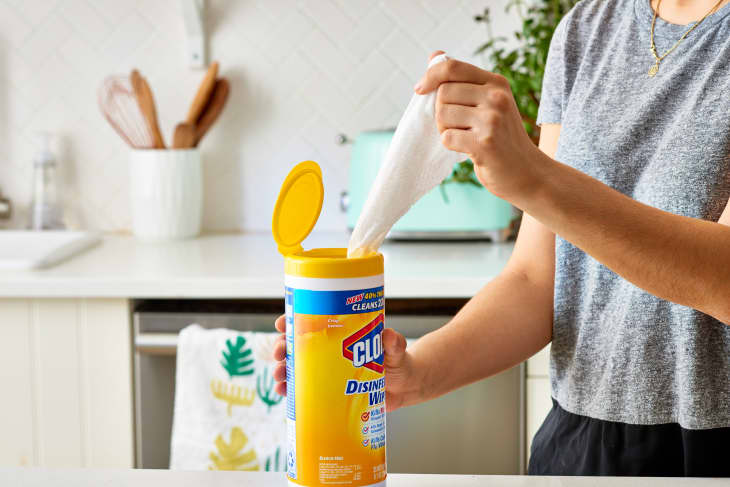We’re All Using Clorox Wipes Wrong, Apparently

For most of us, the invention of Clorox Wipes is right up there with the invention of the wheel or fire. They are simply one of those things that make you wonder how you ever lived in the dark ages before their existence. Especially since, as is the case with these disinfecting wipes, you love them and use them for just about everything.
No, seriously, everything. Why bother with any other cleaning products when you have such a quick and portable way to de-germ your home? Lamps, counter tops, kids. KIDDING… I don’t really use them on my kids—the directions on Clorox Wipes make it very clear they should not be used on skin—although I would be lying if I said the thought hadn’t crossed my mind a time or two (whose idea was homemade slime, anyway?!).
But there can be a big difference between the things we readily do and the things we should do. So, should we be using Clorox wipes on every surface under the sun? Or are there finishes on which Clorox wipes aren’t copacetic? Could the bleach in these wipes damage your furnishings? We reached out to a couple of experts to clear up any confusion.
What Surfaces Can You Use Clorox Wipes On?
First things first, a revelation—the composition of Clorox Wipes doesn’t include the one ingredient you thought you knew. A rep for Clorox informed us that the wipes “actually don’t have any bleach in them, so they are safe on all hard, non-porous surfaces.” Mind… blown.
You should know that if you have a surface at home protected by a sealant, even though the sealant may make the surface effectively non-porous, there are ingredients in Clorox Wipes that can be bad for the sealant itself. Namely, the citric acid that cleans soap scum so well is known not to play nicely with the types of sealant used on granite countertops. (The best way to clean granite countertops is still just hot water and dish soap.)
However, before you head off to wipe every non-porous surface in the house, there is a caveat: You must use Clorox Wipes correctly to truly harness their disinfecting powers… and you probably aren’t.
There’s a “Right” Way to Use Clorox Wipes
“The main issue with wipes that disinfect is they have to be used precisely as the label instructs,” Dr. Ivan Ong, a microbiologist and VP of research and development at Microban, told Apartment Therapy. “For example, the use instructions for Clorox’s disinfecting wipes stipulates that you should ‘Wipe surface, using enough wipes for the treated surface to remain visibly wet for four minutes. Let surface dry.’ Many users in a household rarely time themselves for four minutes while ensuring the surface is wet.”
Raise your hand if you never wait four minutes (*raises both hands*). Per Dr. Ong, most people use Clorox Wipes over a large surface and keep wiping until the surface appears dry and clean. “What this might do,” he cautioned, “is spread germs around the surface.”
Don’t worry, though—no one is saying you need to bid adieu to your beloved wipes. Dr. William Schaffner, chair of the department of preventative medicine at Vanderbilt University School of Medicine, encourages a “use it and lose it” method when it comes to Clorox Wipes. The gist? You use a single wipe for a single surface and then toss it.
Basically, you can keep Clorox Wipe-ing to your heart’s content if you make sure you follow the instructions on the label and only use on hard, non-porous surfaces. If you’ve broken these rules in the past, well, no harm no foul. At least you didn’t ruin anything (that we know of), and you can be much more mindful moving forward now that you’re armed with all the info.
Read more: 3 Disinfectants You Can Use If You Can’t Find Clorox Wipes